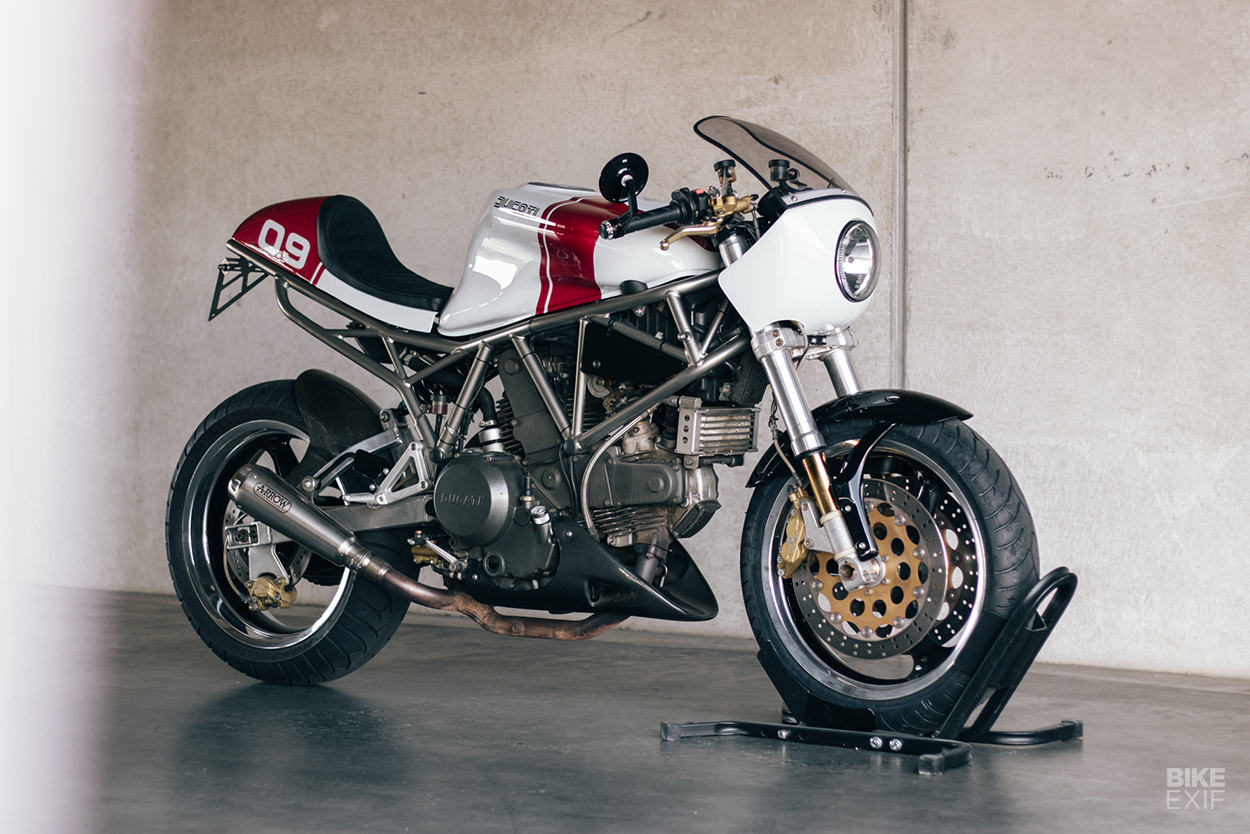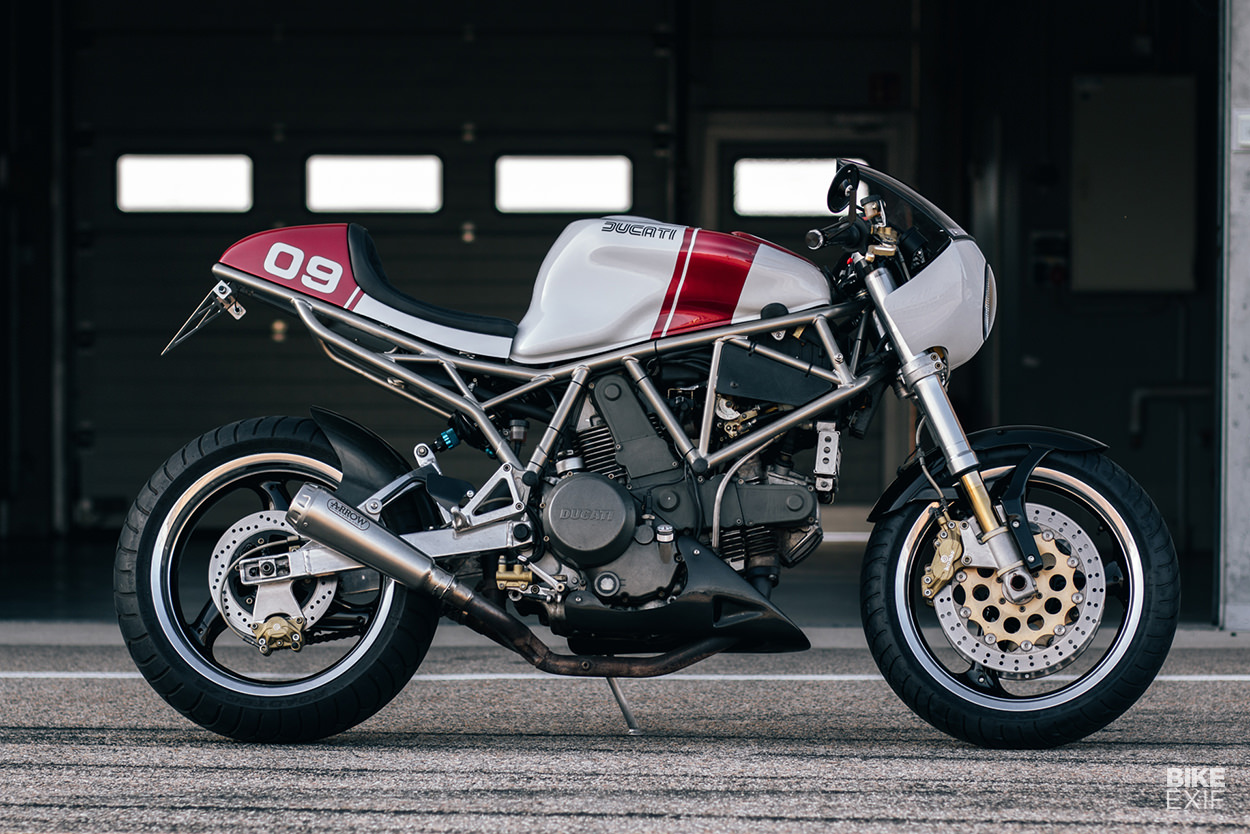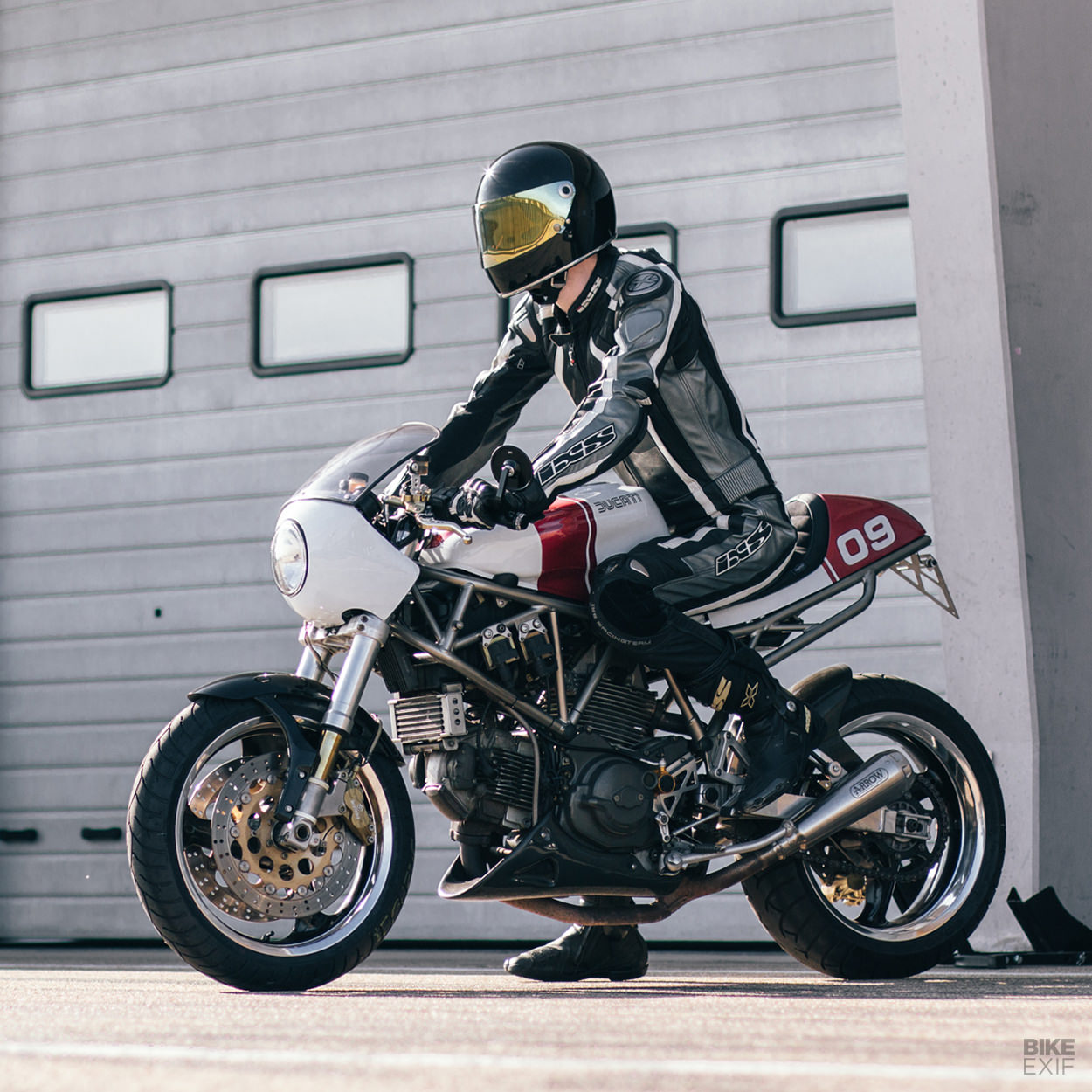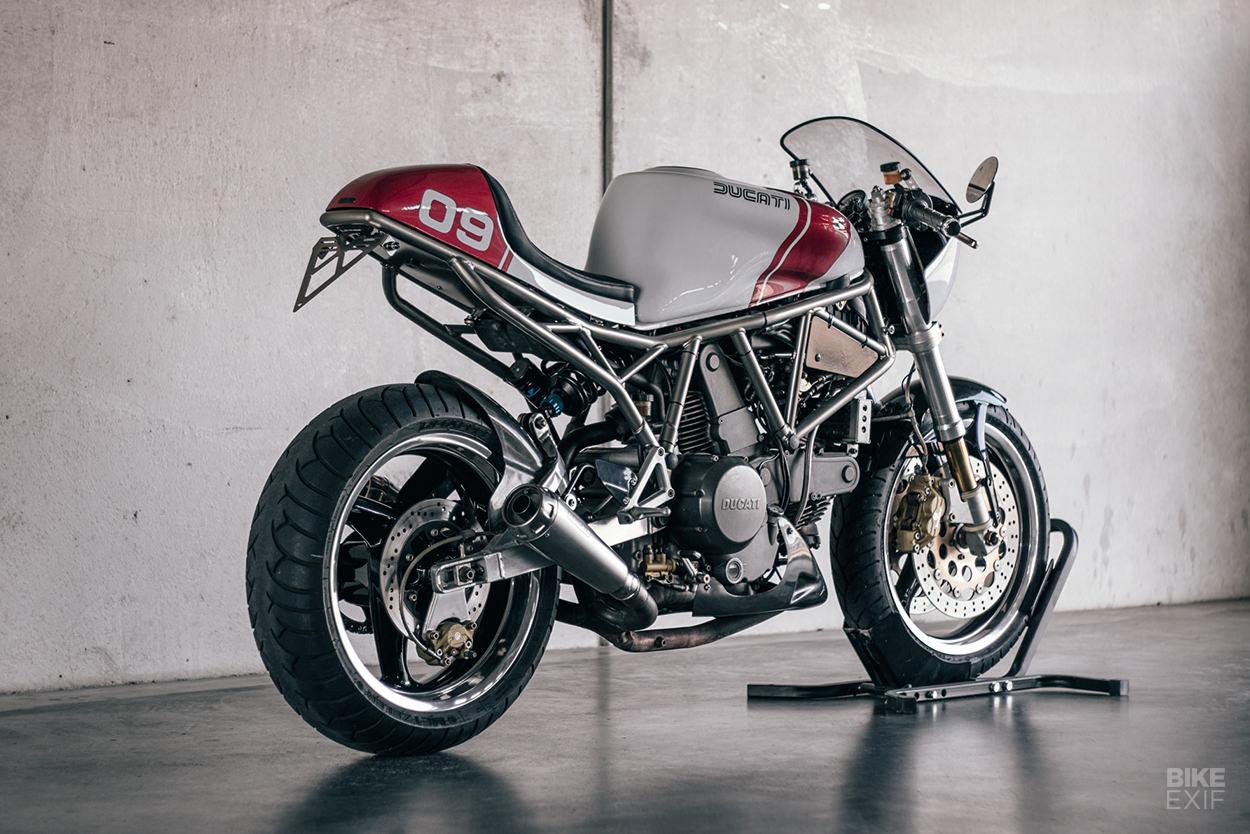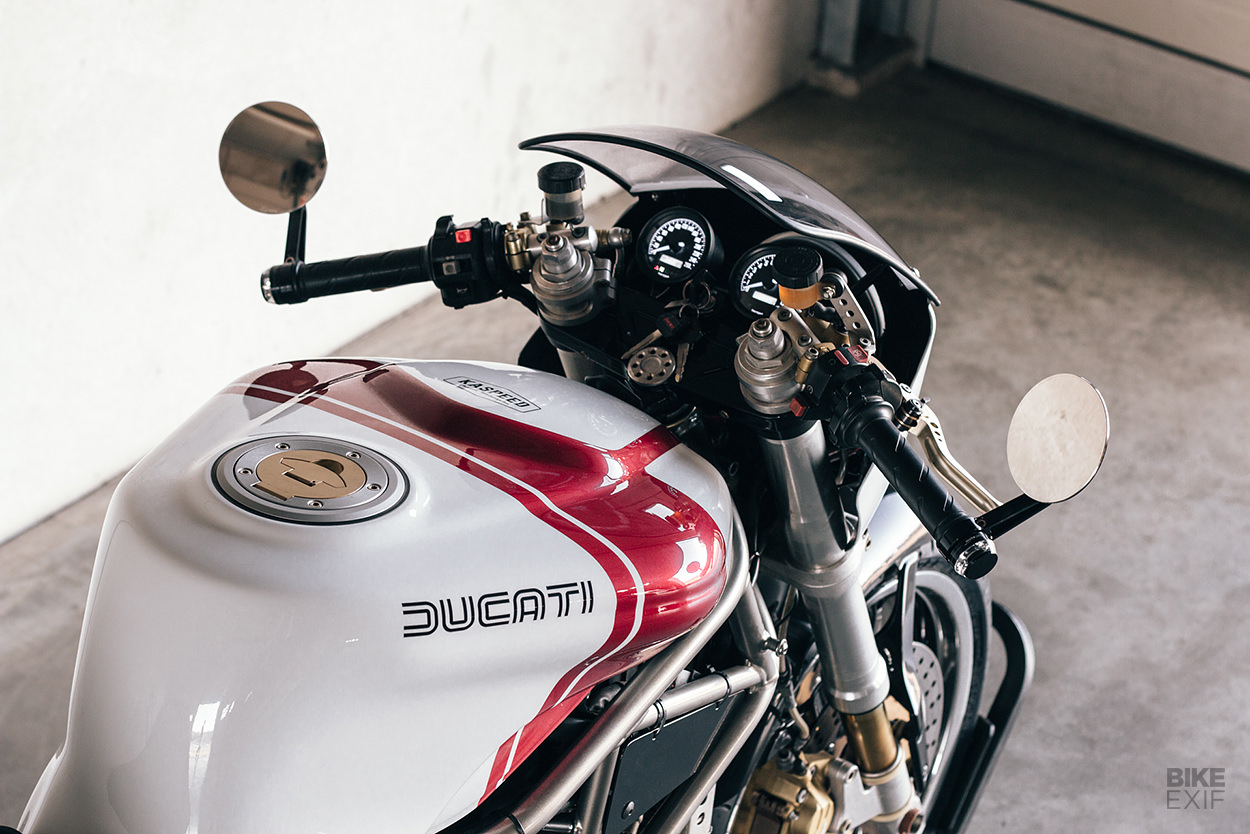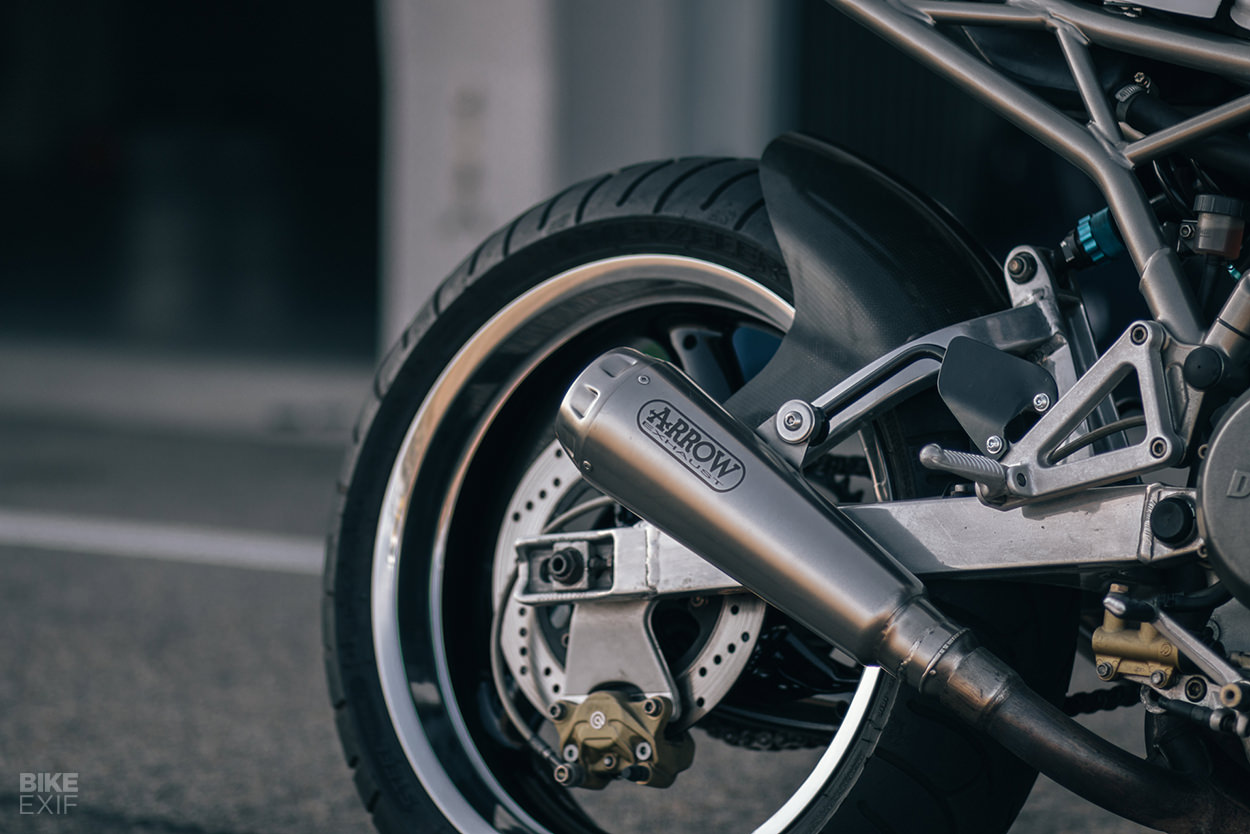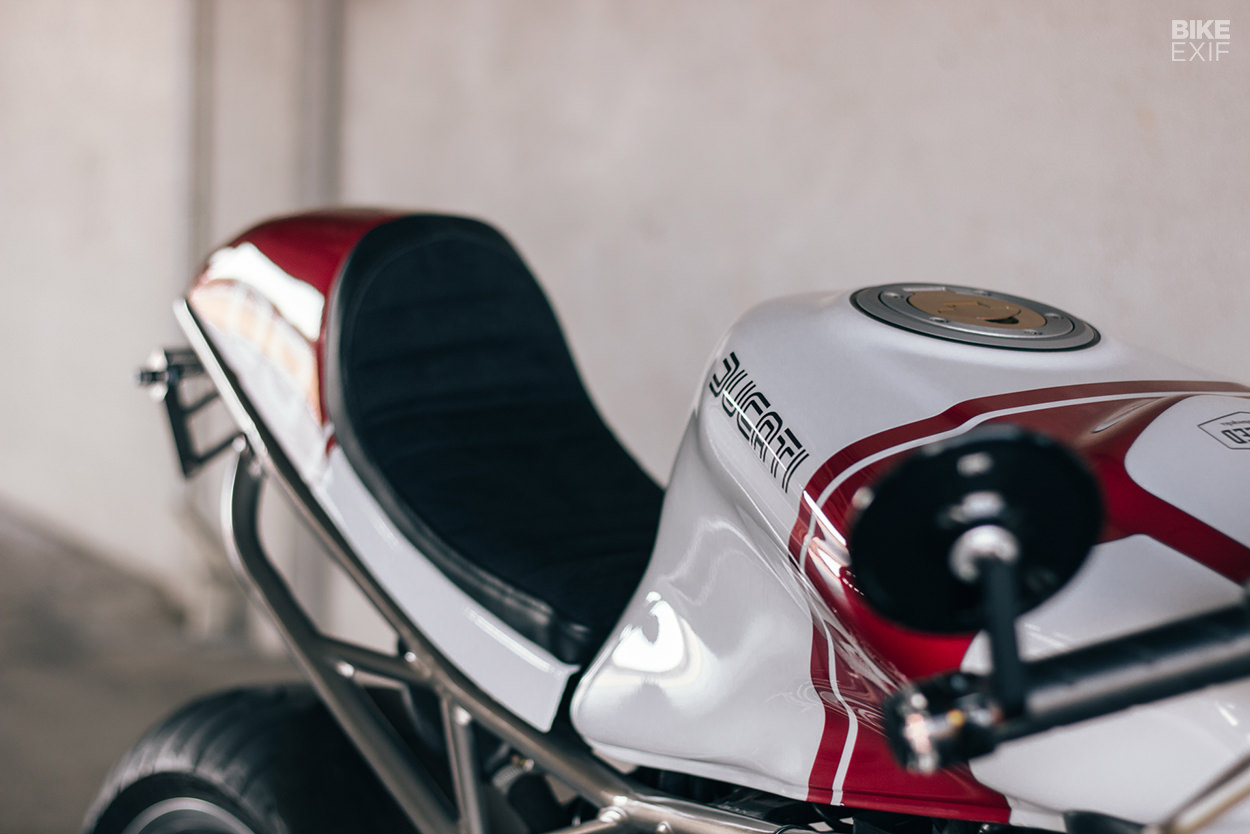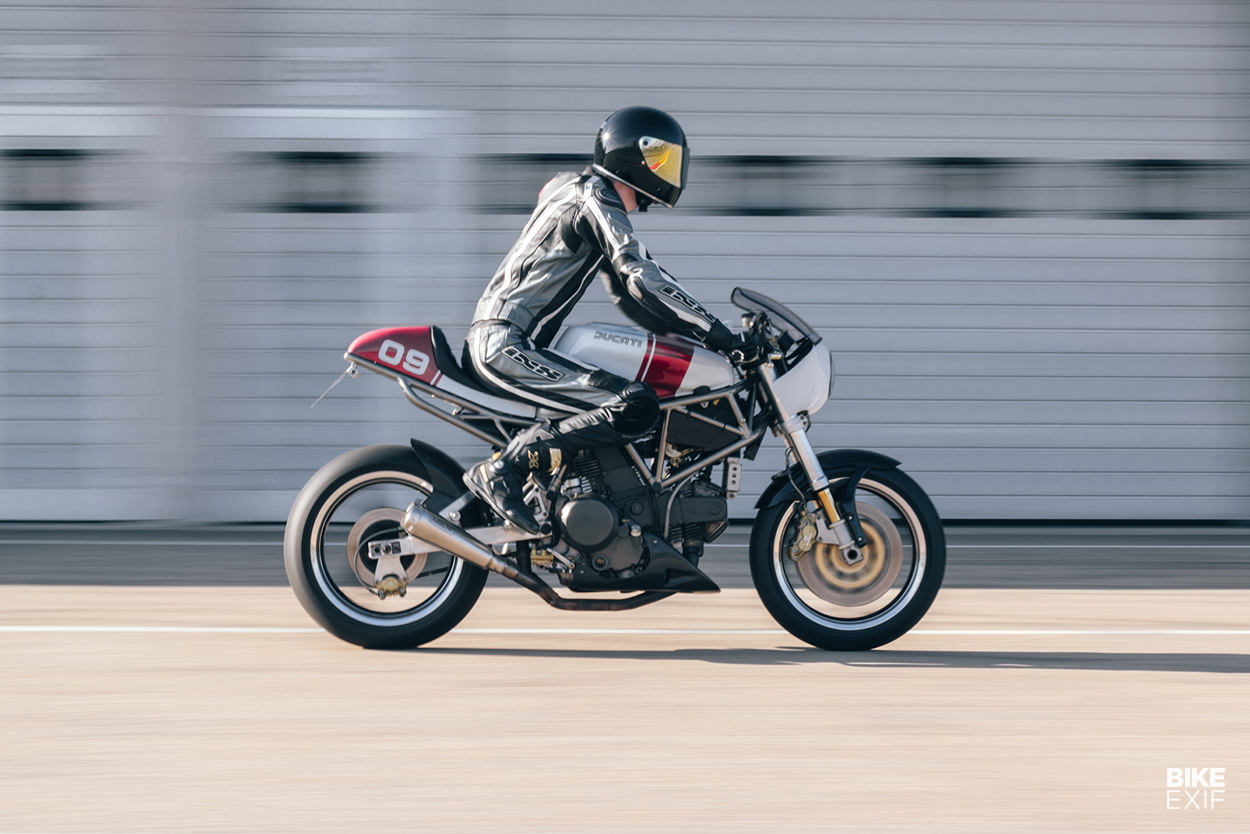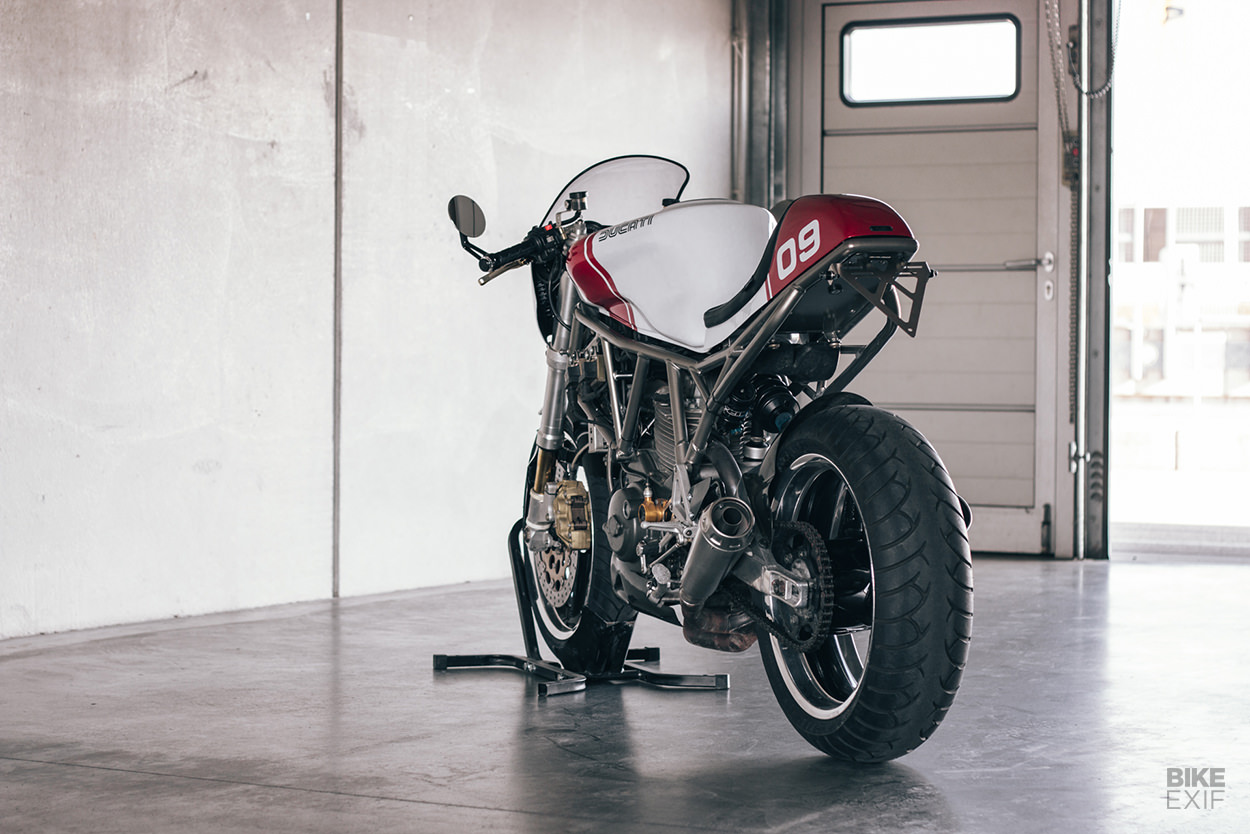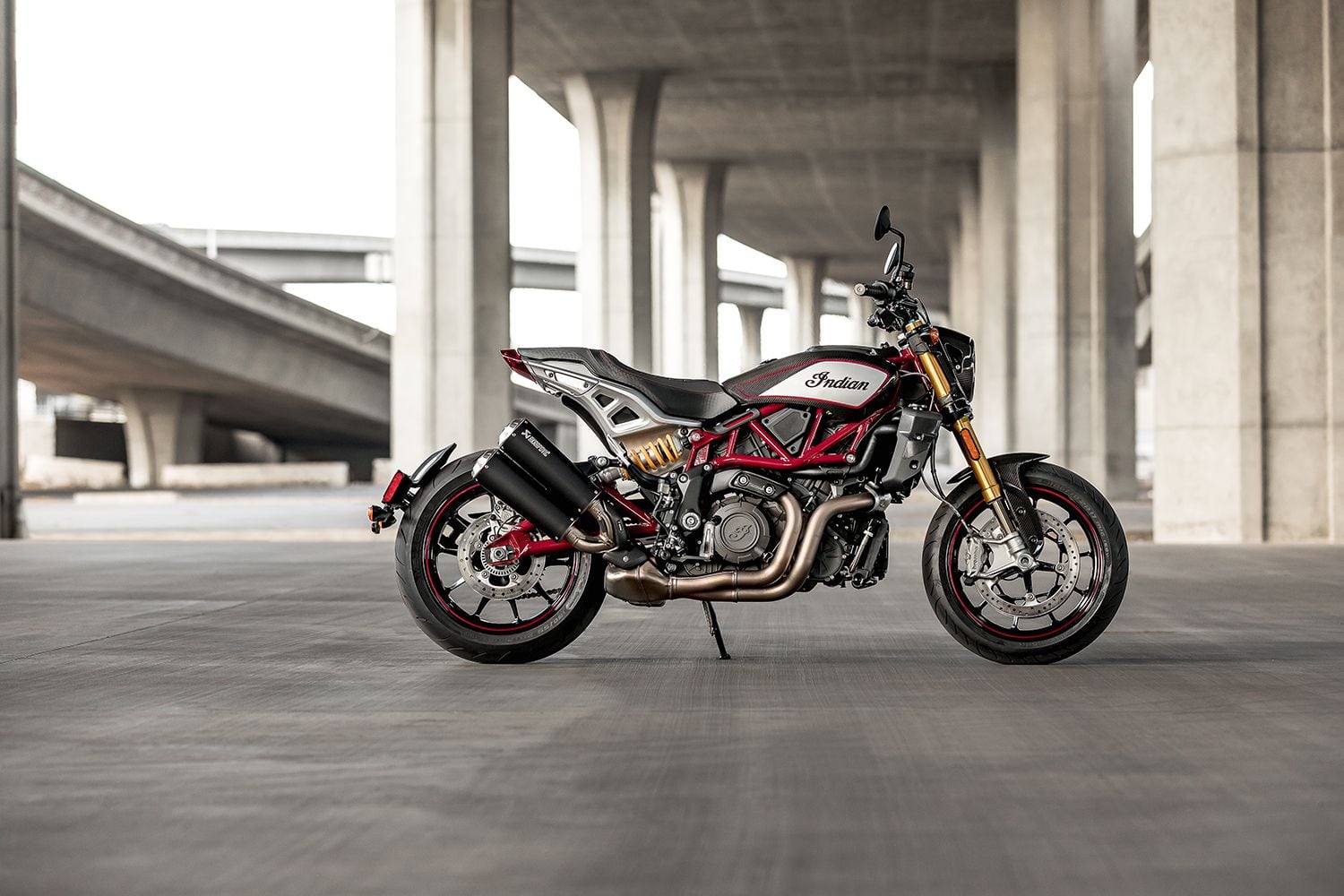Some would say the 750 SS was not Ducati’s finest hour. The podgy, plasticky styling has always been divisive, and the engine is rated at a somewhat underwhelming 65 hp.
But this Duc is light—a mere 403 pounds (183 kg) dry—and the handling is good on smooth asphalt. The trellis frame is a work of art, the Brembo brakes are well up to the job, and the Supersport is easy to ride compared to most Ducatis of its era. Best of all, you can now pick up a mint 750 for less than $5,000 in the US if luck is on your side.
This fuel-injected 750 i.e. from the German shop Kaspeed trades the heavy plastic vibe for something much fresher and lighter. It’s still obviously a ‘classic,’ but we get to see the iconic 90-degree Desmo V-twin and tubular frame completely unencumbered.
Kaspeed always seem to get the right ‘look’ for their bikes, and it’s probably down to the great mix of talent in this family shop.
Karsten Dressel casts a fatherly eye over his sons Jimmy and Mick, whose skills complement each other: one has a degree in mechanical engineering, and the other is an automotive modeling specialist.
Despite the current lockdown in Germany, Jimmy says they’re still finding ways to build bikes. The CAD apps and metalworking machines are humming, along with more prosaic servicing jobs. “Everyone wants his or her bike ready for the European spring!” Jimmy says.
This 2000-spec Supersport was given a complete strip-down and refurbishment, as befits a machine more than two decades old. It’s Kaspeed’s second 750 SS with a cafe racer vibe, and the Dressel guys have used their previous experience to refine the formula.
They’ve made subtle tweaks to the Moto Guzzi Le Mans-style front fairing, with flushed-in LED lighting. “This time, it’s a more minimal unit, but it still holds all the OEM electronics,” says Jimmy.
The fairing is mounted to the triples, so it moves with the steering, and protects a pair of Daytona Velona 60 gauges. The bars have been upgraded too, with Motogadget bar-end indicators and mirrors, and the levers are from Probrake.
The frame has been detabbed, looped at the back with a simple tube, and repainted. The tank has been slightly remodeled, with the stock padding removed for a cleaner look, and part of the wiring loom is now hidden behind the black aluminum covers just below the tank. The ignition coils are exposed though: “We like the mechanical look of that, rather than hiding it,” says Jimmy.
For their second crack at the 750, Kaspeed have added front and rear fenders printed out of carbon fiber reinforced thermoplastic. A compact belly pan has been designed to fit around the exhaust pipework, which is now terminated with a pair of Arrow Pro-Race mufflers. “I think it adds to the feeling of a ‘retro superbike’,” says Jimmy.
The seat and rear cowl are completely custom, crafted from a mix of carbon fiber, Kevlar and fiberglass. “We used the mold for the rear cowl that we still had from the previous bike,” says Jimmy. “A huge time saver.” The seat pad was handmade by a local upholsterer, using leather and Alcantara.
The paint job was a tougher nut to crack. “It took a real effort with all the lines, shapes and logos. But we think doing more than just one flat color was worth it, for a dynamic retro look.”
The paint took around 30 hours to complete, and uses a Volkswagen silver/white with a touch of gray, plus a dark metallic red for contrast (“and that classic Ducati feeling”). The wheels are equally neatly refinished too, with black paint and contrasting polished rims.
Kaspeed’s newest creation is fully road-legal and TÜV approved, and looks perfect for weekend blasts around the twisty backroads of Saxony. We bet it was hella fun to punt around the historic Sachsenring MotoGP circuit too, where these shots were taken.
Kaspeed Custom Motorcycles | Facebook | Instagram | Images by Jimmy Dressel
Source link


